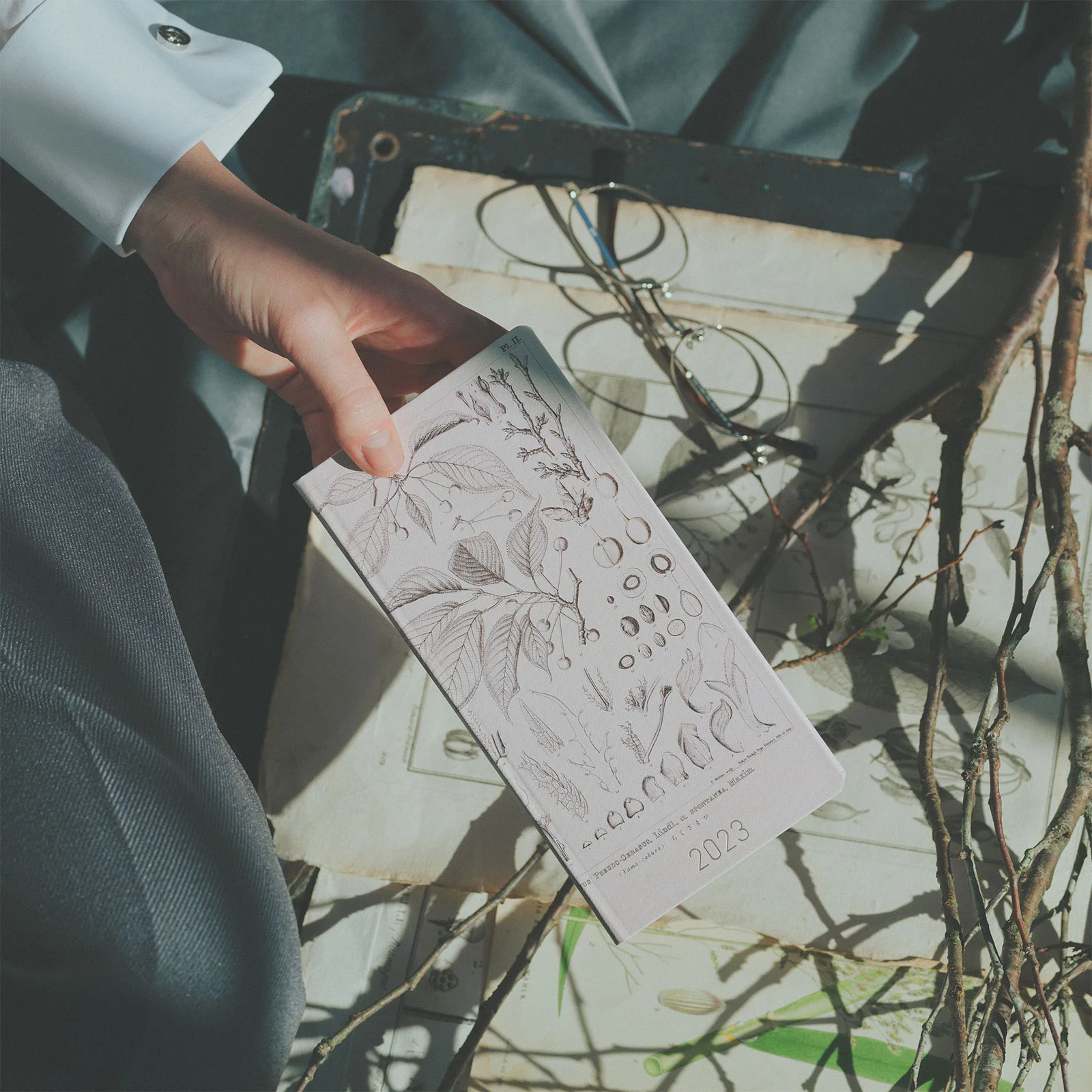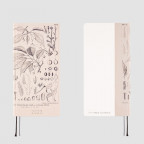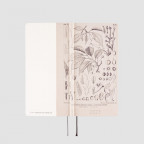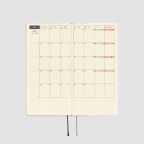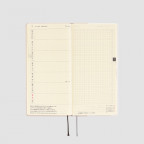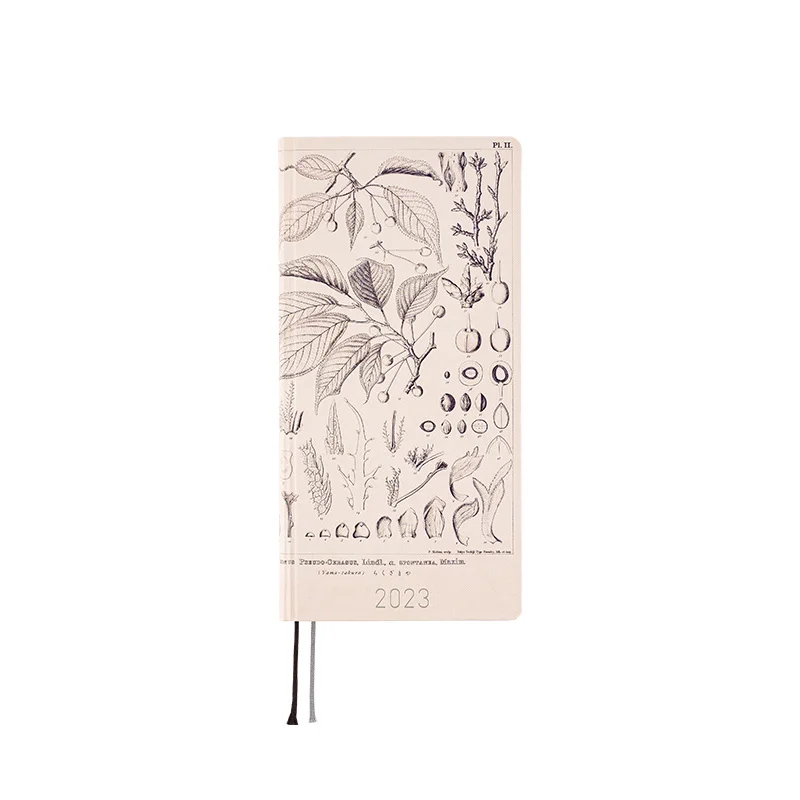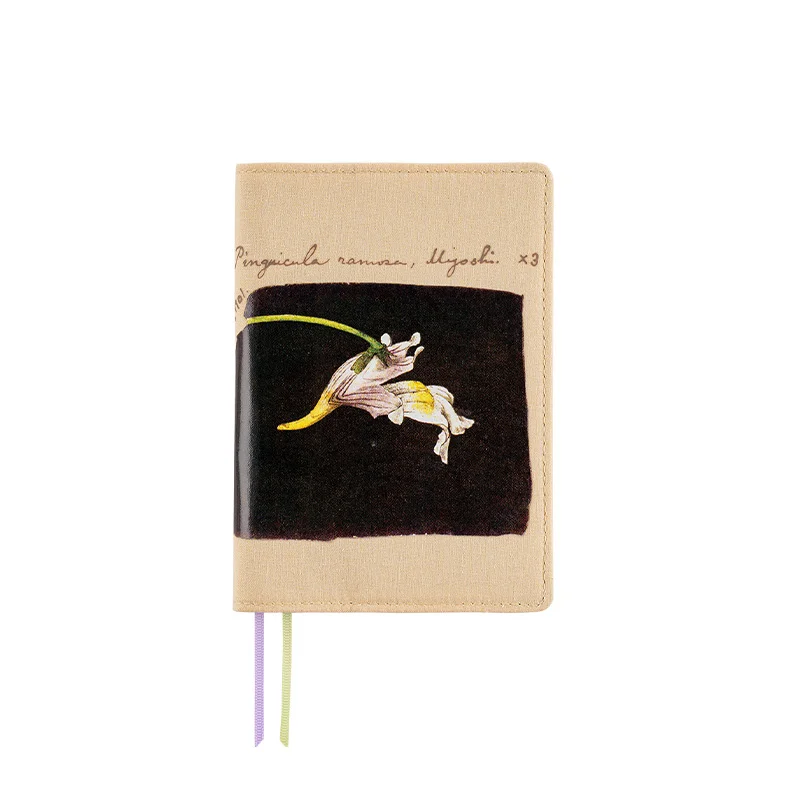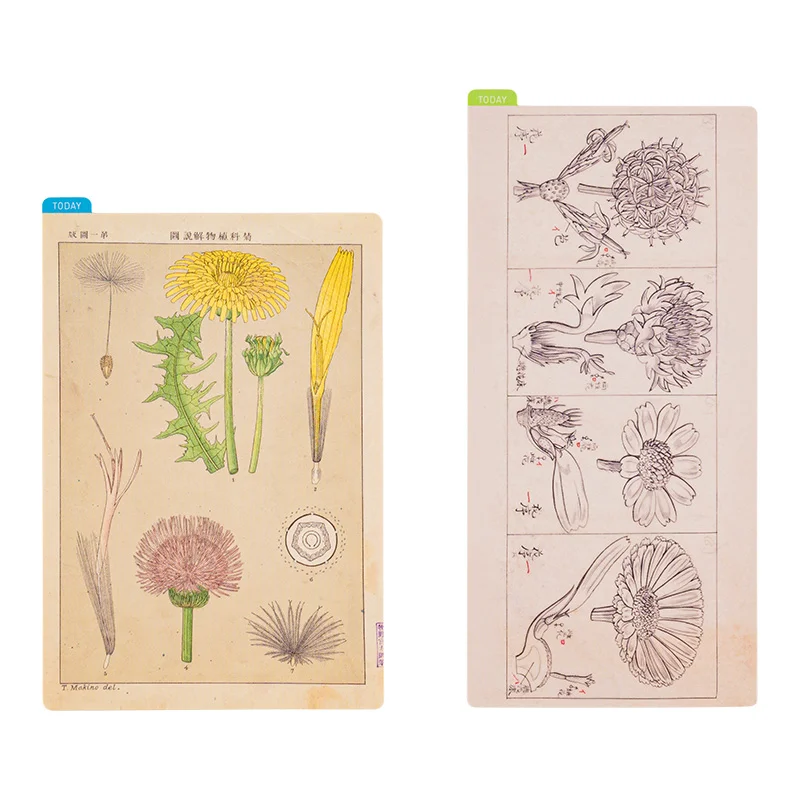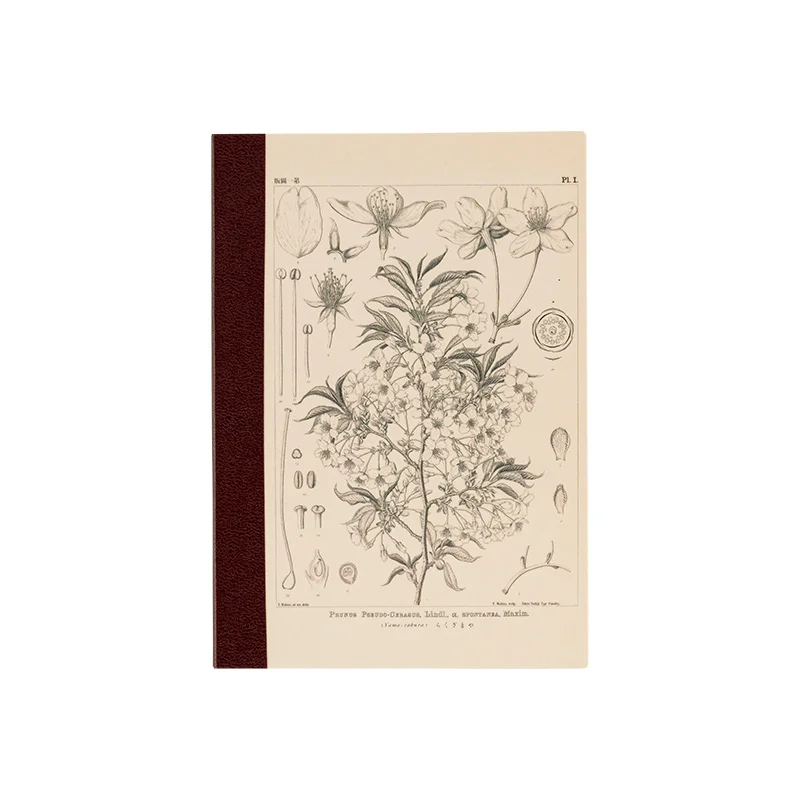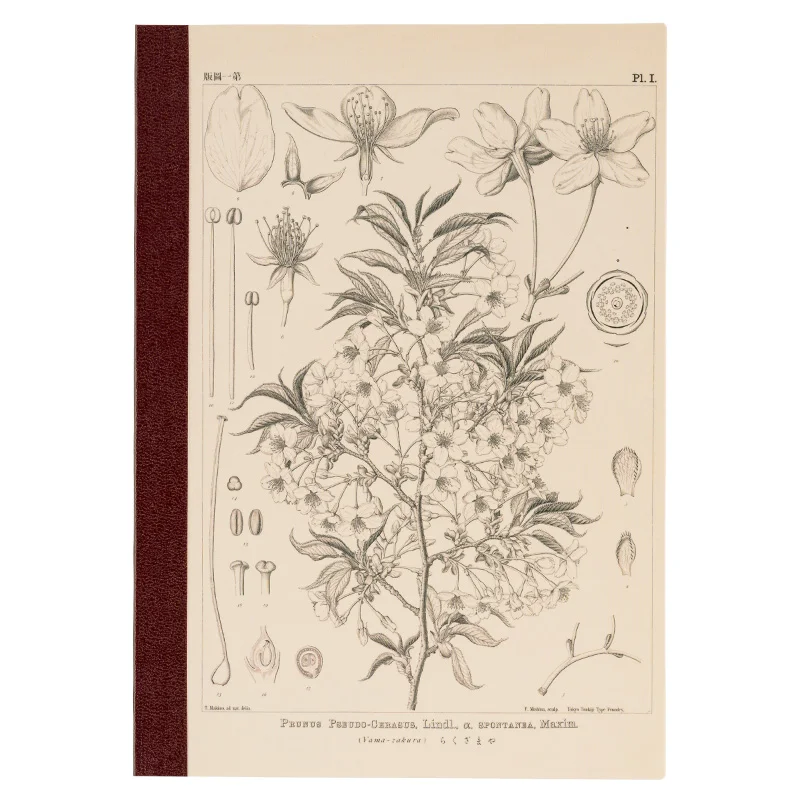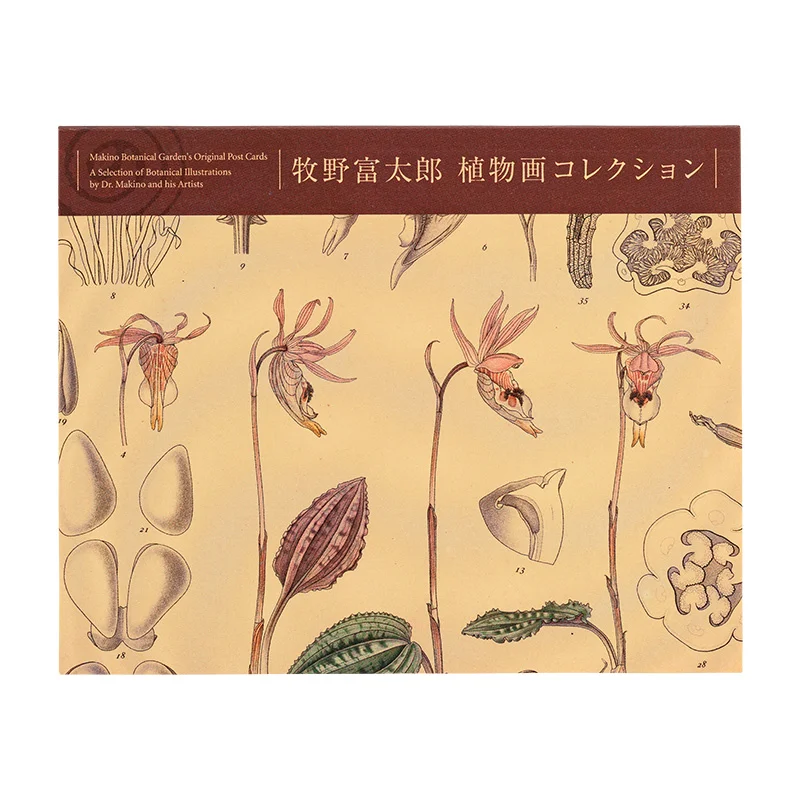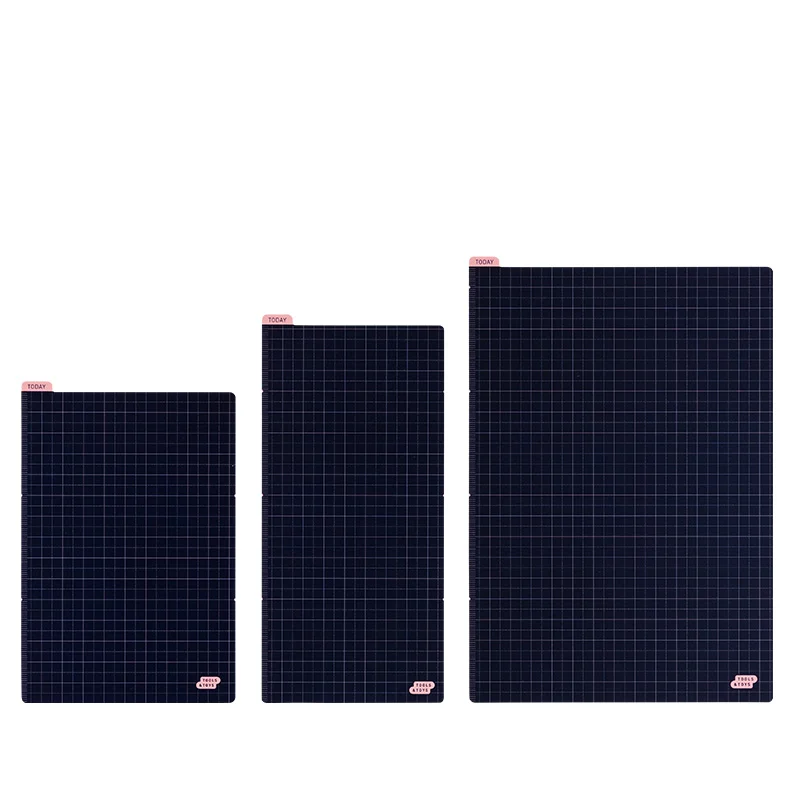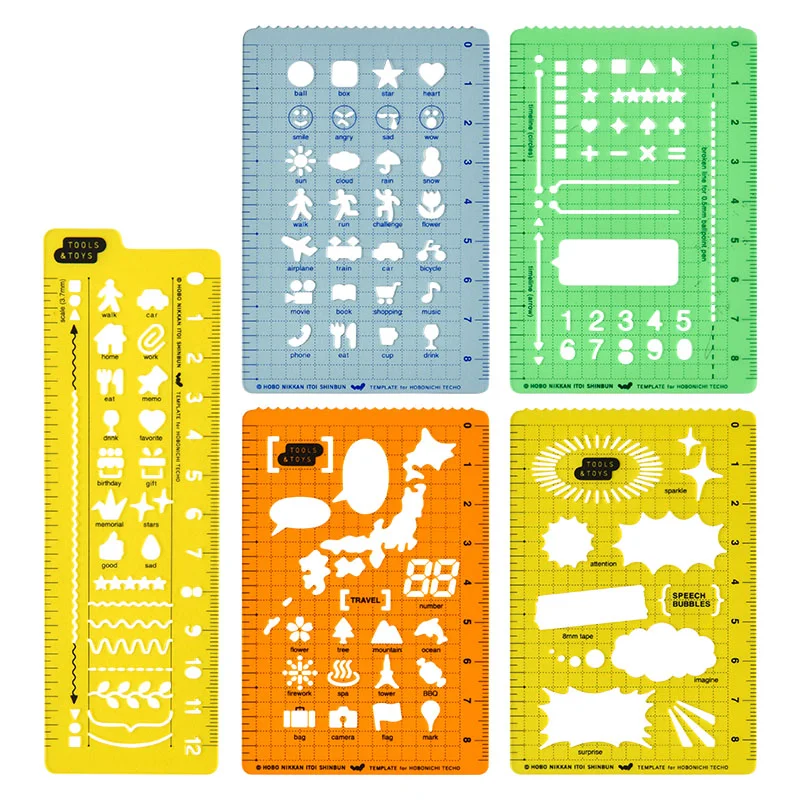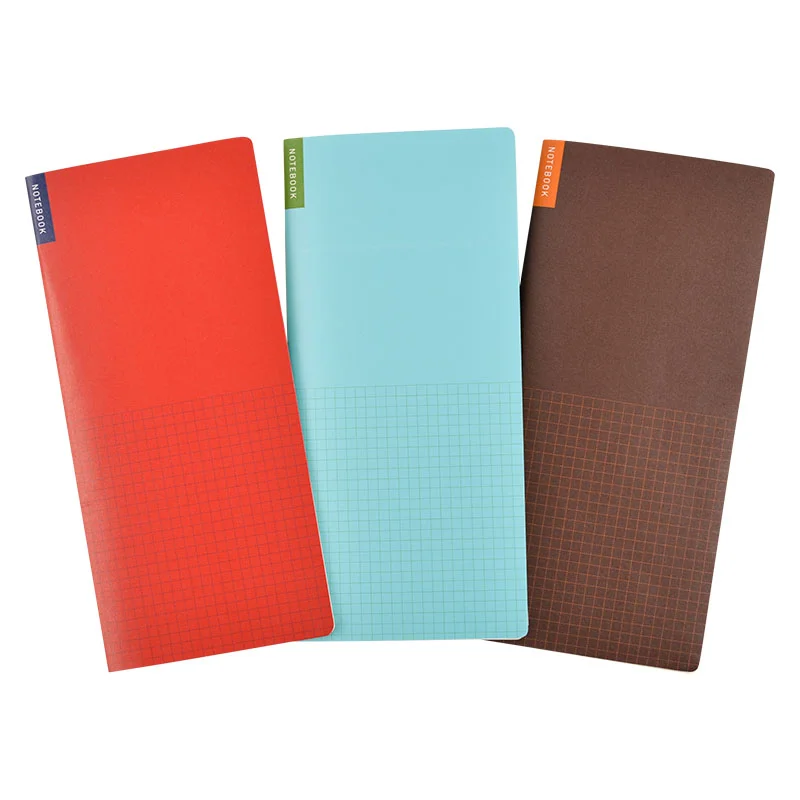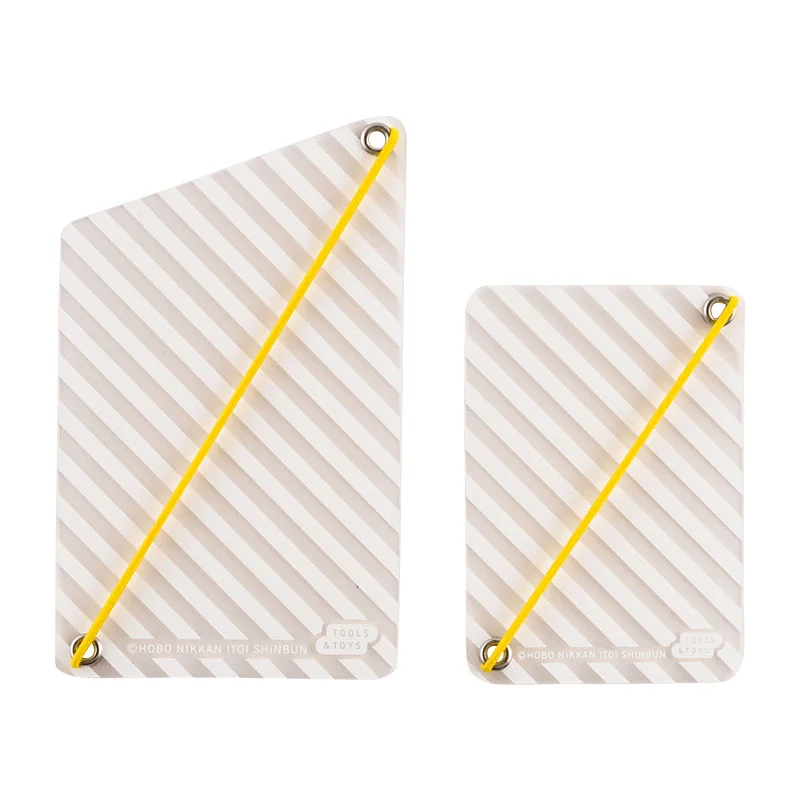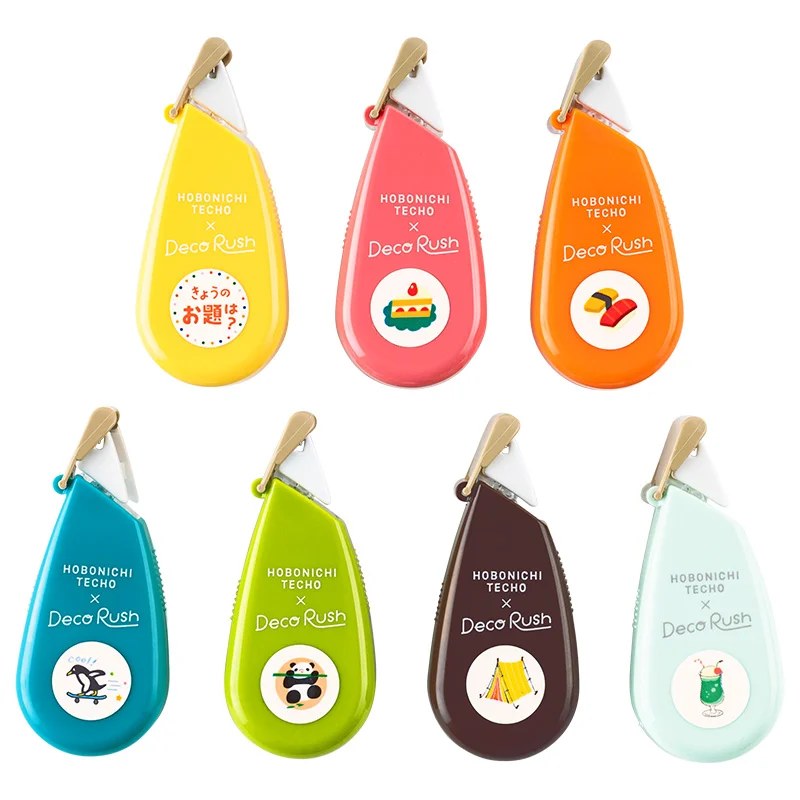Tomitaro Makino Yamazakura (Diagram)Weeks Hardcover Book (Japanese)
The Weeks cover features a botanical illustration of the Yamazakura cherry tree by botanist Dr. Tomitaro Makino in 1900. This is the second illustration, which shows a diagram of the cherry tree, following the first illustration which showed the whole shape of the tree.
At the time, Dr. Makino chose the Yamazakura, meaning “mountain cherry,” as a symbolic Japanese plant for the opening illustration of his “Flora Japonica” book. In the second illustration, the branches, leaves, fruits and seeds of the Yamazakura were observed and drawn, with the parts arranged in a good balance.
The rough cloth cover is inspired from the image of a canvas. The botanical illustrations, born from a keen eye for observation, knowledge, and experience, make this techo an ideal companion for your daily life.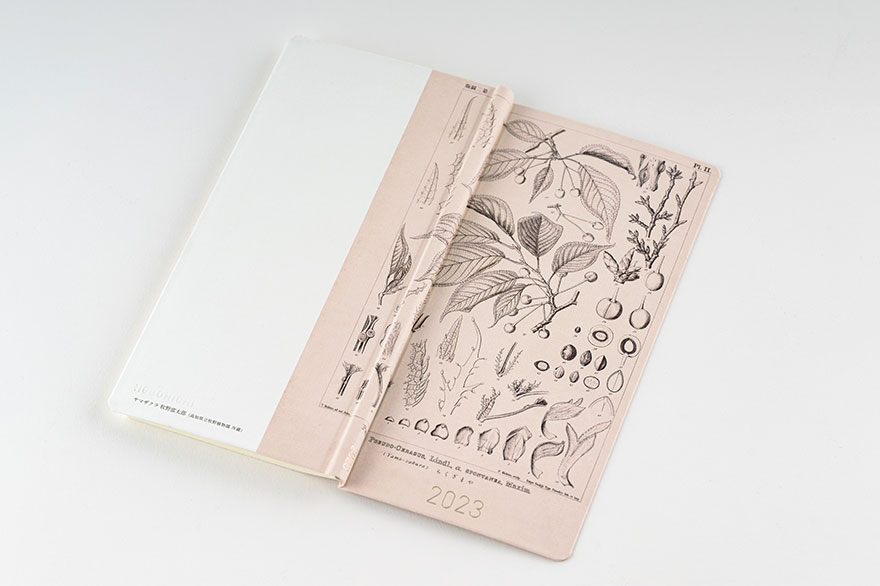
The illustrations were drawn about 120 years ago during the Meiji Era, using loupes and microscopes for detailed observation and creating drawings that show the structures of various parts. Using a Makie painting brush with a bundle of mouse hairs, even the smallest details of leaves and fruits are expressed clearly through shading.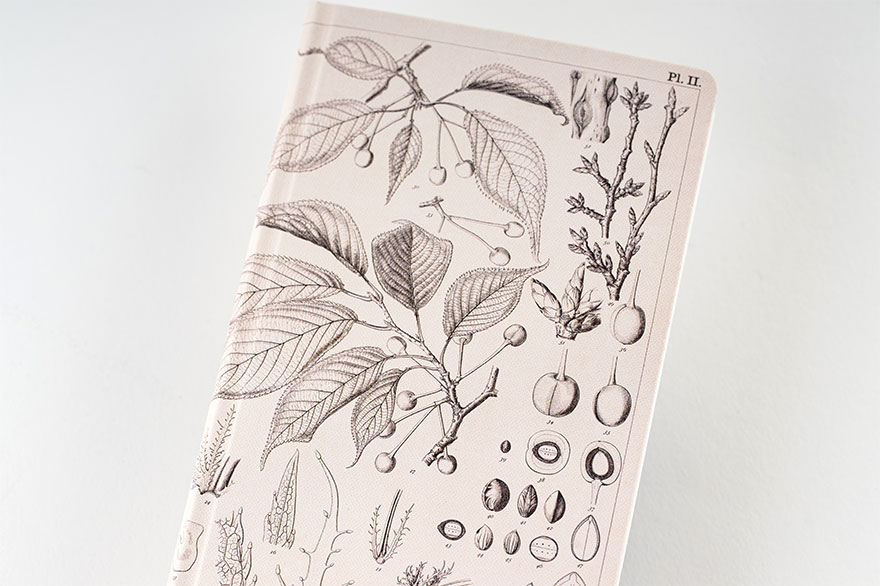
Letters written below the stunning botanical illustration “PRUNUS PSEUDO - CERASUS, Lindl., α. SPONTANEA, Maxim.” represent the scientific name of the Yamazakura cherry tree. The notation “ra-ku-za-ma-ya” spelled in hiragana reflects the writing style of the Meiji Era, written from right to left, instead of left to right.
When you order this Hobonichi Techo Weeks, you’ll receive a clear, adhesive corner pocket you can stick anywhere you like.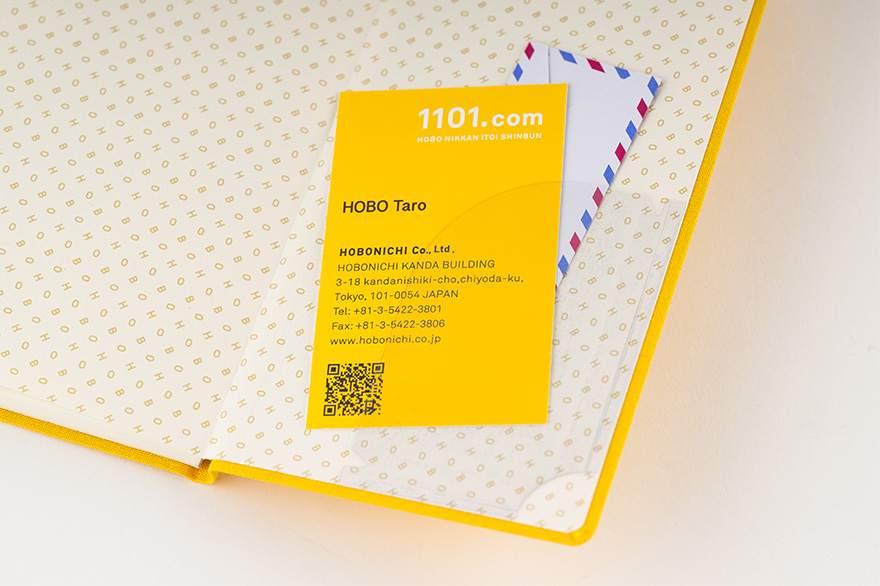
When you purchase your Hobonichi Techo through the online Hobonichi Store, you will receive a free 2023-edition (navy x brown pen body) Hobonichi Store exclusive 3-color Jetstream ballpoint pen (available while supplies last).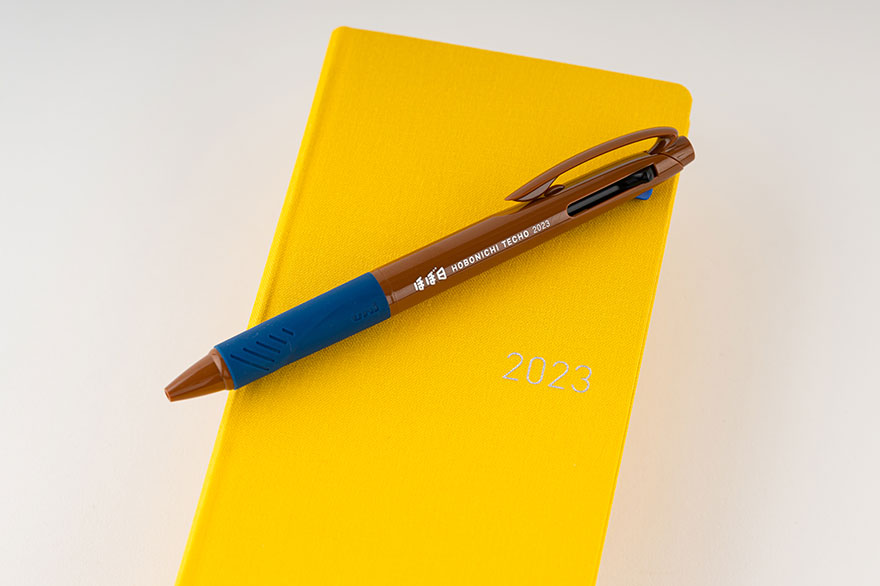
If you’d like storage space or a way to change up the look of your Weeks book, you can customize your book by pairing it with a Weeks cover.
See Weeks cover lineup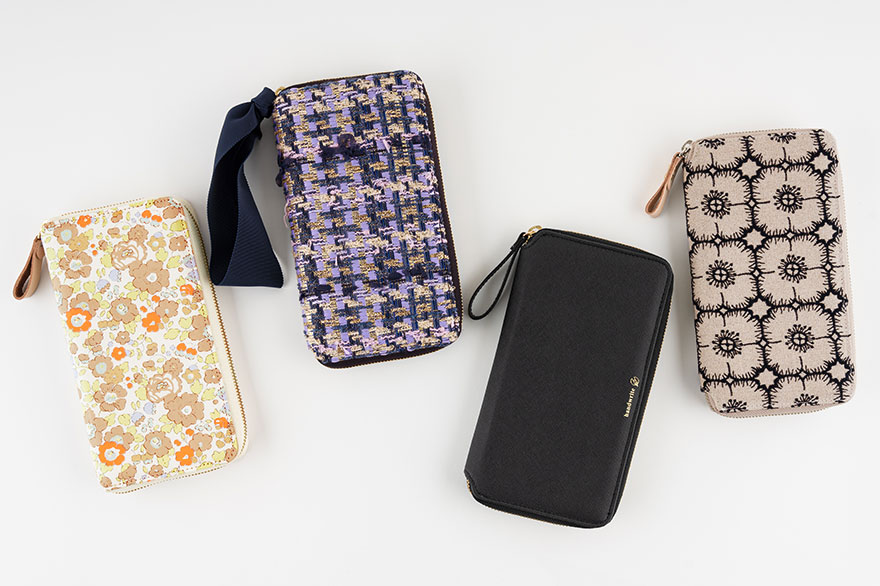
We also have a Hobonichi Pencil Board fitted for the Weeks size designed with a botanical illustration drawn by Dr. Tomitaro Makino. This is a pencil board with botanical illustrations of a global thistle, cornflower, chamomile, and calendula printed on it.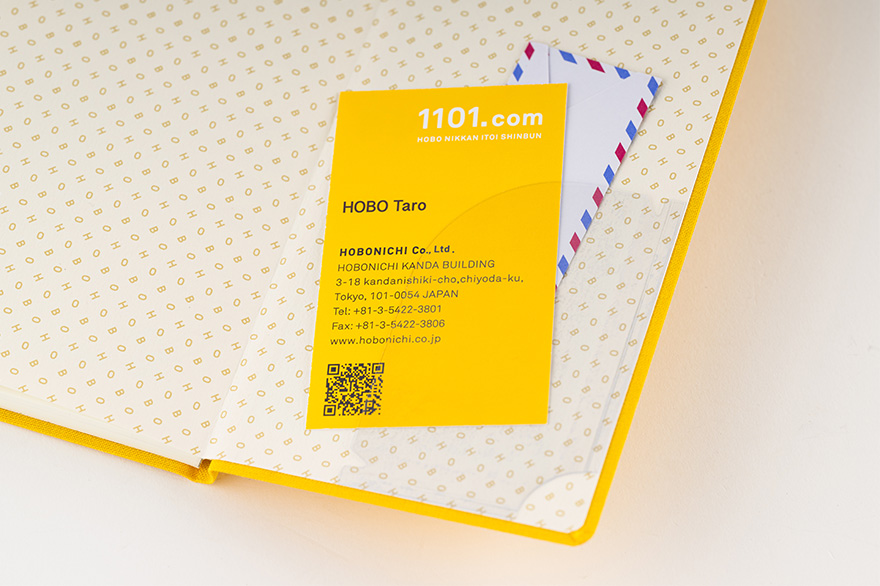
You might also like the additional products in collaboration with Dr. Tomitaro Makino’s botanical illustration! They include an Original size techo cover “Koshinso,” Weeks book “Yamazakura (Diagram),” Hobonichi pencil boards in two sizes, Hobonichi Plain Notebook in A6 and A5 sizes, and the Postcard book available at the Kochi Prefectural Makino Botanical Garden.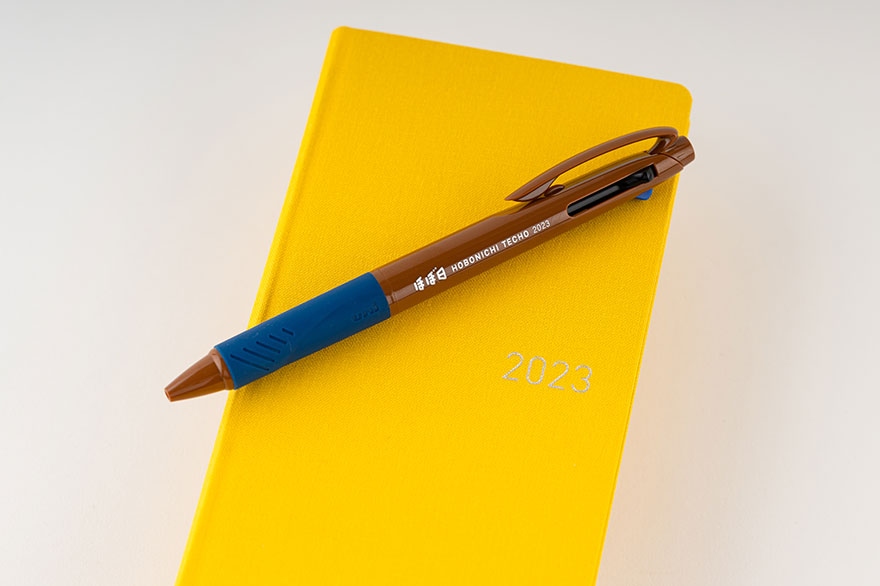
About Botanist Tomitaro Makino
Born April 24, 1862 in present-day Sakawa Town, Kochi Prefecture. Raised in the rich natural surroundings of Tosa City, he began to study botany independently as a young child. Moved to Tokyo and devoted himself to botanical research through the Department of Botany at Tokyo University’s Faculty of Science.
Founded “The Botanical Magazine” with a close friend; they collaborated to publish their discovery of the flowering plant Yamatogusa in 1889. Collected over 400,000 specimens during his 94-year lifespan, and named over 1,500 discovered species. Known as the “Father of Japanese Botany.”
Information provided by the Makino Botanical Garden.
Staff List
- Photographer
- Styled Images: Nobuki Kawaharazaki / Product Detail: Hiroyuki Oe
- Stylist
- Minami Nosaki
- Makeup & Hair
- Daisuke Yamada (cake.)
- Model
- Serena Motola (BOX CORPORATION)
![]()
- Tomitaro Makino Yamazakura (Diagram)Weeks Hardcover Book (Japanese)
![]()
- Tomitaro MakinoKoshinso
![]()
- Tomitaro MakinoHobonichi Pencil Board for A6 Size / for Weeks (Tomitaro Makino)
![]()
- Tomitaro MakinoHobonichi Plain Notebook (A6) - Yamazakura
![]()
- Tomitaro MakinoHobonichi Plain Notebook (A5) - Yamazakura
![]()
- Tomitaro Makino Botanical Art Collection Postcard Book
![]()
- HobonichiHobonichi Pencil Board
![]()
- HobonichiHobonichi Stencils
![]()
- HobonichiHobonichi Memo Pad Set for Weeks
![]()
- HobonichiHobonichi Page Keeper
![]()
- Plus x HobonichiDeco Rush
Specifications
- Overview
Size H: 188 x W: 94 x T: 10 mm / H: 7.4" x W: 3.7" x T: 0.4"
*Specifications may vary slightlyWeight Approx. 140 g Main material Rayon, paper - Weeks Book (Japanese / April Start)
Language Japanese Pages 240 pages Paper Type / Binding Thin, light Tomoe River paper resistant to bleeding and designed for planners / Stitch-binding Graph Paper Size 3.55 mm Start of Week Monday-start week Yearly Calendar 2022, 2023, 2024 Yearly Index Apr. 2023 - Mar. 2024 (2 pages) Monthly Calendar Mar. 2023 - Apr. 2024 (28 pages) Daily Quotes One per week (Japanese) Weekly Pages Feb. 27, 2023 - Mar. 31, 2024 (114 pages)
*All weekly pages include quotes.Graph Paper 75 pages Bonus Pages Shorthand Note-Taking / Using Common Items to Measure Size / My 100 / Solar Terms / My Favorite Things / How to Better Enjoy Conversation / Emergency Preparedness / Age Table / Conversion Chart / Getting the most of Hobonichi / Contact List / Personal Notes Listed Information Week of the year / Rokuyo (traditional Japanese calendar) / Solar terms / Japanese holidays / Moon phase (weekly pages include every phase, monthly calendars only include full and new moon) Other See the Exploring Each Type page for more details
Please Read Before You Buy
In order to provide you with the most satisfaction for your product, we've compiled a list of warnings, potential issues, and tips to keep in mind for this particular product. Please be sure to read this information carefully before placing your order.
- Test fountain pens before regular use
The Hobonichi Techo's Tomoe River paper is designed to prevent bleed-through, but some fountain pens and water-based ink pens are not compatible with this paper. When switching to a new pen, we recommend testing the pen somewhere in the book, such as the back memo pages, to see if the ink bleeds through or takes an especially long time to dry.
- Cover corners are slightly bumpy and shiny
The corners of the cover contain light traces of press marks, shines, and lumps. This is an unavoidable part of the manufacturing process.
- Coloring may stain other objects
The dye in the cover may stain other objects if it rubs against or sticks to them, especially if the cover is wet from water or sweat from your hands. Please store with care.
- Imprinted year numbers may peel
The numbers of the year are stamped onto the cover in metallic or other colored leaf, so strong rubbing or everyday use may cause the numbers to peel off.
- Avoid storing in hot and humid places
Please avoid storing your product in hot, humid places or placing it atop other objects for long periods of time as this may result in lower quality and color stains.
